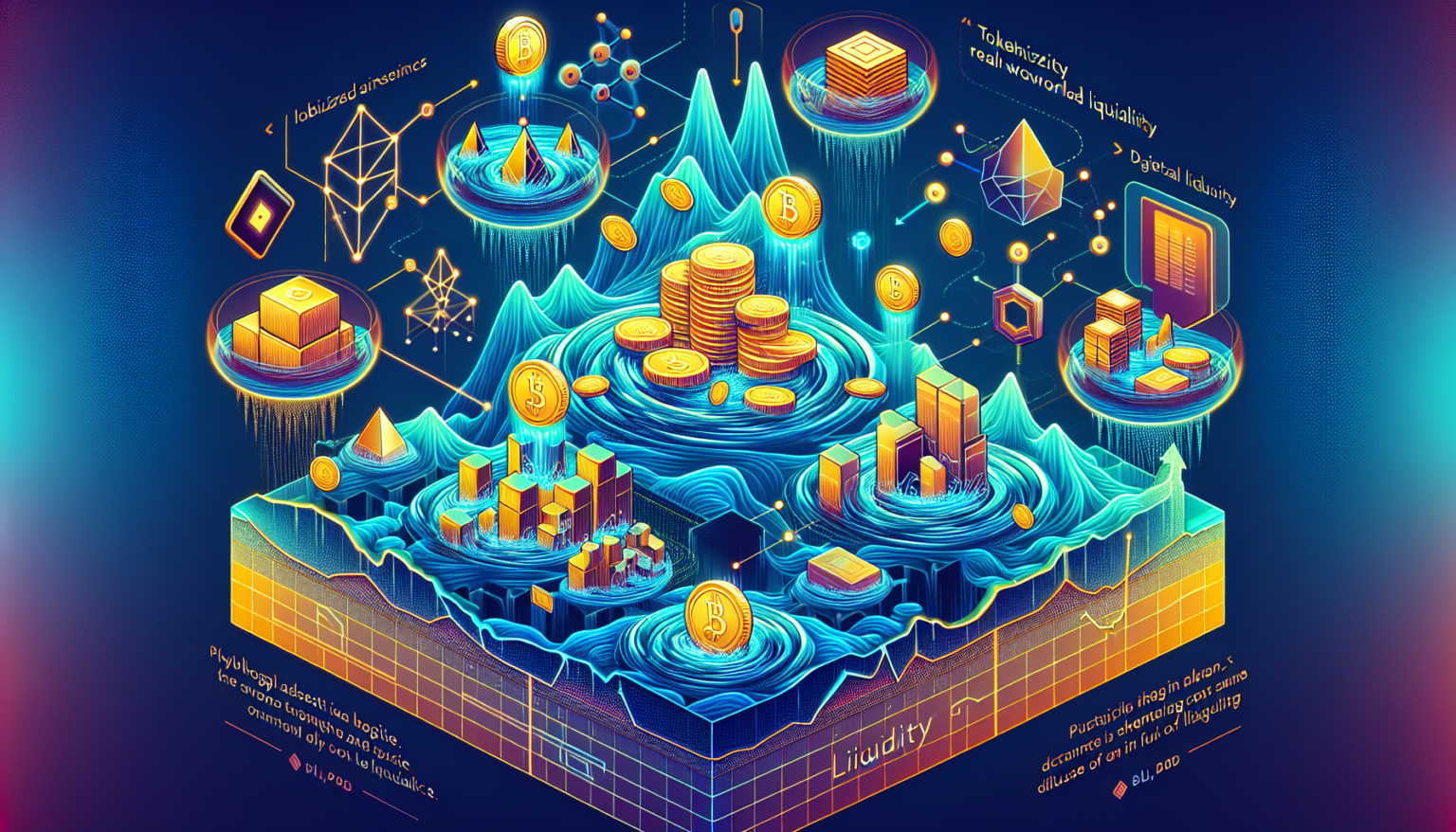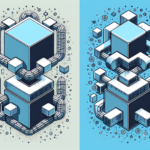Understanding Tokenized Real-World Assets
What are Tokenized Real-World Assets?
Tokenized real-world assets (RWAs) are physical or tangible assets that have been converted into digital tokens on a blockchain. This process uses cryptographic technology to represent ownership of these assets in a decentralized manner. Examples include real estate, art, commodities, and even shares of a company.
The Technology Behind Tokenization
Tokenization typically involves smart contracts, which are self-executing contracts with the terms of the agreement directly written into code. These contracts ensure that ownership transfer and transactions are transparent, traceable, and immutable. Using blockchain technology, each transaction is recorded on a public ledger, providing a significant level of security against fraud and misrepresentation.
The Liquidity Challenge in Traditional Markets
Understanding Liquidity
Liquidity refers to how easily assets can be bought or sold in the market without affecting their price. In traditional markets, many assets face liquidity challenges. Real estate, for instance, often requires a lengthy sales process, and art pieces might take months or even years to find a buyer.
Barriers to Liquidity
Several factors contribute to the liquidity issues in traditional asset markets. High transaction costs, lengthy periods of due diligence, and a limited pool of potential buyers all slow down the process. This can create situations where assets are underutilized, inhibiting growth in various sectors.
Enhancing Liquidity through Tokenization
Fractional Ownership
One of the most significant benefits of tokenizing assets is the ability to create fractional ownership. By breaking down assets into smaller, tradable units, tokenization enables various investors to buy into high-value assets that were previously out of reach. For example, instead of needing hundreds of thousands of dollars to invest in a commercial property, individuals can purchase a fraction of the asset, allowing for widespread participation and increased liquidity.
Case Study: Real Estate Tokenization
In real estate, platforms that tokenize properties allow investors to buy tokens representing shares of a building or unit. This opens up opportunities for smaller investors to enter the market, which can significantly increase the liquidity of real estate assets. If a property is tokenized into 1,000 units, it becomes much easier for individuals to buy and sell their tokens, transforming the once-illiquid asset into a more dynamic investment vehicle.
24/7 Trading Opportunities
Tokenized assets can often be traded on digital platforms around the clock, unlike traditional markets with fixed hours. This 24/7 availability removes the barriers of time that restrict traditional asset transactions, enhancing liquidity significantly. Investors can buy and sell tokens at their convenience, responding to market changes in real time.
The Role of Decentralized Finance (DeFi)
The rise of DeFi platforms further enhances the liquidity of tokenized assets. By utilizing decentralized lending protocols, investors can put their tokenized assets up as collateral and obtain loans without the need for traditional intermediaries. This adds another layer of liquidity, allowing users to access funds while still retaining ownership of their assets.
Market Efficiency and Transparency
Reducing Transaction Costs
Transaction costs in traditional asset markets can be high, attributed to intermediaries, processing fees, and legal expenses. Tokenization can streamline this process by eliminating many intermediaries, which reduces costs. As more participants enter the market due to lower costs, liquidity improves, benefiting everyone involved.
Transparency and Trust
With the use of blockchain, all transactions involving tokenized assets are recorded and visible to all participants. This enhances transparency and builds trust among investors, encouraging them to engage in buying and selling activities. The more transparent a market is, the more confident investors feel, thereby increasing liquidity.
Smart Contracts and Efficiency
Smart contracts facilitate automatic execution of agreements, further enhancing efficiency. For example, if a buyer acquires tokens representing a property, a smart contract can automatically handle the ownership transfer, payment, and updating of records without human intervention. This technology minimizes errors and speeds up transactions, leading to a more liquid market.
Regulatory Considerations
Navigating Legal Frameworks
While tokenization offers many advantages, it also faces challenges related to regulatory compliance. Regulators worldwide are still figuring out how to effectively govern tokenized assets, balancing innovation with investor protection.
The Need for Clear Guidelines
Having clear legal frameworks in place can promote trust and stability in the market. As regulations evolve, they may further facilitate greater liquidity in the tokenized markets by providing clarity and security for investors.
Global Reach
Tokenization can create a global marketplace for assets that were previously confined to local or national boundaries. By allowing international transactions in tokenized assets, liquidity can be enhanced significantly, as investors from around the world can buy and sell assets without being limited by geographical constraints.
Market Risks and Challenges
Volatility and Market Sentiment
While tokenized assets can enhance liquidity, they also come with risks. The value of tokens can be highly volatile, influenced by market sentiment and external economic factors. As liquidity increases, so does the potential for price fluctuations, which can lead to investor anxiety.
Addressing Market Manipulation
The transparency of blockchain technology decreases the likelihood of market manipulation, but it doesn’t eliminate it entirely. Investors must remain vigilant and conduct their due diligence to navigate potential risks associated with trading tokenized assets.
Education and Awareness
For tokenized assets to achieve their full potential in improving liquidity, there needs to be an effort to educate investors about the benefits and risks. Awareness is key to building confidence in this emerging market, which will ultimately lead to increased participation and liquidity.
The Role of Platforms and Community Initiatives
Platforms that facilitate the trading of tokenized assets are essential in pushing this education forward. Many initiatives are focused on providing resources and building communities to share knowledge and experience, fostering an environment conducive to enthusiastic participation.
Future Directions for Tokenized Assets and Liquidity
Innovation in Asset Class Tokenization
As technology advances, it’s likely that new asset classes will be tokenized, and existing ones will become more efficient. This evolution can lead to more investment opportunities and increased liquidity across a diverse range of markets.
The Intersection of AI and Tokenization
Artificial intelligence (AI) could also play a significant role in enhancing liquidity within tokenized markets. AI-driven analytics and decision-making tools could offer investors real-time insights into trends, risks, and opportunities, enhancing overall market efficiency.
Building Bridges between Traditional and Digital Assets
The future may also see closer integration between traditional finance and tokenized assets. As more traditional investors begin to explore decentralized finance and tokenization, this could lead to even greater liquidity as the lines between the two worlds blur.
Conclusion
As the landscape of finance evolves, the tokenization of real-world assets promises to transform the liquidity of various markets dramatically. With ongoing innovation and regulatory developments, the future looks bright for investors and market participants alike in this dynamic environment.








